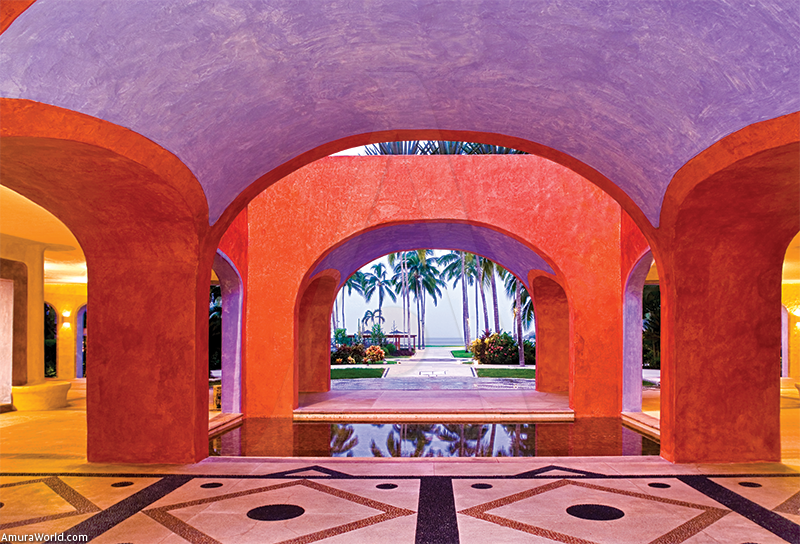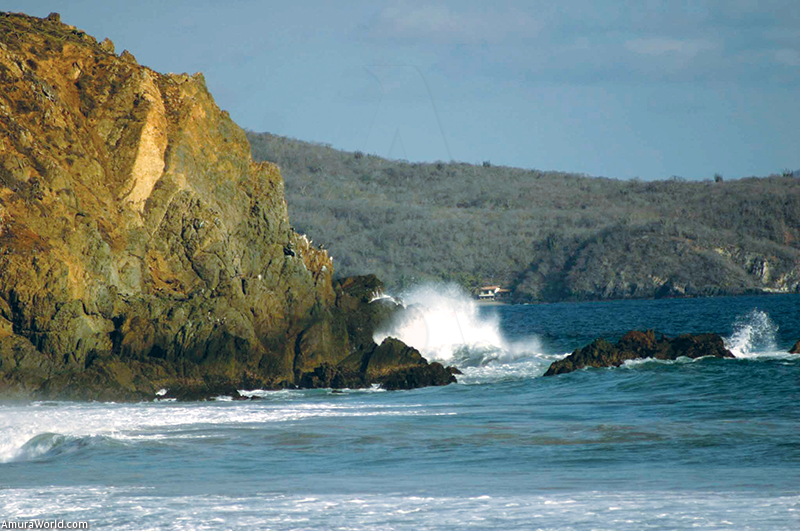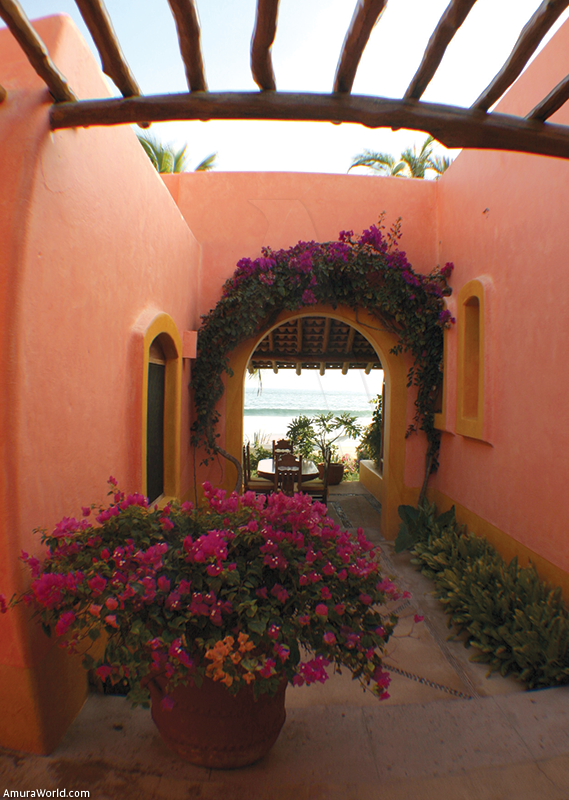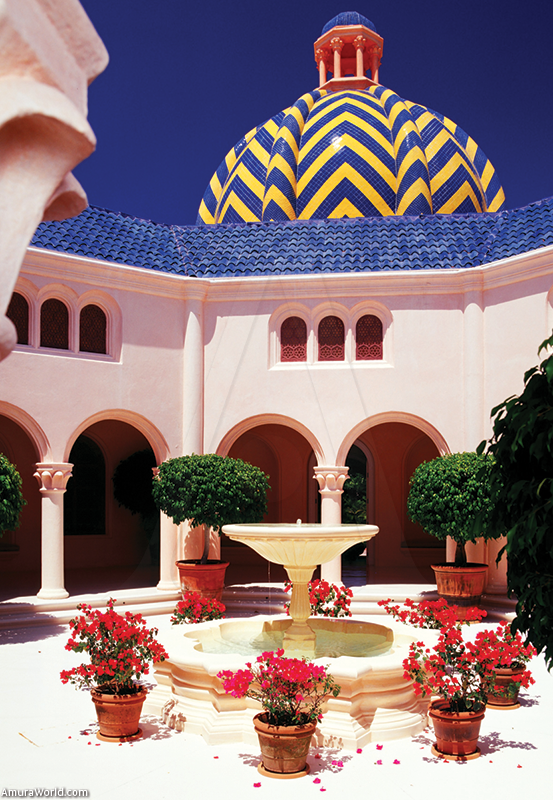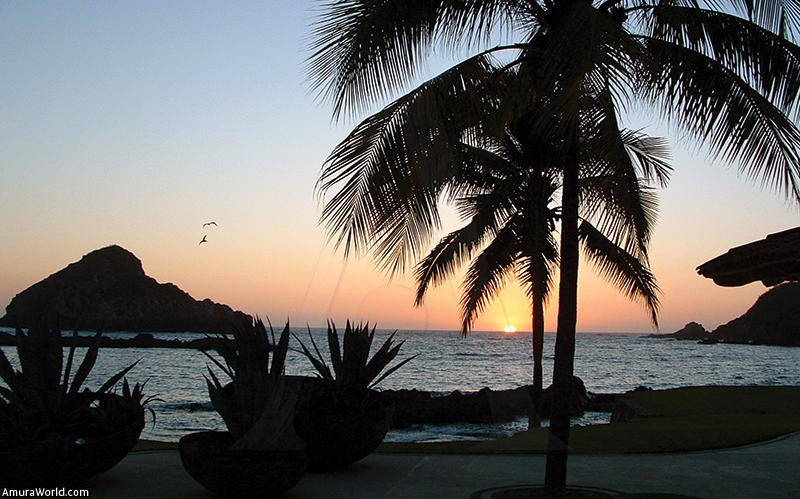An out of the ordinary destination
On the coast of the Pacific, in a beautiful, picturesque place far away from the hustle and bustle of the world, you will find tranquility and the perfect setting for relaxation as well as the lavishness and comfort that you have always wanted to experience on your vacations. Delight your senses with the ideal combination of adventure, nature, luxury, comfort and serenity that you will only find in Costalegre.
Costalegre is an ecological-tourism corridor that combines pristine beaches and quaint towns. It stretches along the entire coast of the state of Jalisco, from Barra de Navidad to the south, to Costa Majahuas, before Bahía de Banderas and Puerto Vallarta, to the north, in a space of continuous natural beauty and great tourism potential. Because of this, the state and federal governments have declared it a Zona de Desarrollo Turístico Prioritario (Priority Tourism Development Area).
It is divided into five zones: Bahía de Navidad, Bahía de Tenacatita, Costa Careyes, Bahía de Chamela and Costa Majahuas, which are distinguishable from one another by their different geographic characteristics, architecture and the activities that can be enjoyed in each.
Of course, there are many other towns along the corridor such as Melaque, Tamarindo, La Manzanilla, Punta Pérula, Tomatlán, Quémaro, Cuastecomates and Cruz de Loreto, among others, which are also very attractive and practically unexplored.
This area is the most distant from the state capital but it is the most attractive because it is possible to explore these places and discover views of coastal jungles and mountains among bays, beaches, estuaries, islands and the numerous variants of this exuberant, beautiful region. It is a versatile, ecological, out of the ordinary destination.
The Climate
One of the reasons why visitors like Costalegre and, generally, the entire coastal area of Jalisco is because of its moderate tropical climate, which is frequently compared with Hawaii’s. Visitors will find that the weather is ideal for a beach vacation since the temperature rarely descends lower than 25 °C (77 °F) during the day and, except for a few refreshing rain showers, the sun shines during most of the year.
Maybe you should bring along an umbrella in case it rains during the afternoons of the rainy season (from June to October) but a heavy jacket will only be necessary if you plan on exploring the mountains.
Winter, the high tourism season, is temperate and sunny. Temperatures range between 25 and 30 °C (77 and 86 °F) during the day, which is very comfortable for a stroll on the beach, and at night they vary between 18 and 28 °C (64 and 82 °F).
Spring and fall have the warmest temperatures while, in summer, the thermometer can reach 33 °C (91 °F) and the humidity can make it seem hotter than it really is.
Getting There
In Mexico, the state of Jalisco occupies the second place in receiving commercial flights. It has two international airports, “Miguel Hidalgo y Costilla” in Guadalajara and “Gustavo Díaz Ordaz” in Puerto Vallarta, as well as 61 airstrips distributed in the whole entity. Daily, 83 domestic and 47 international flights take place.
Besides, the southern portion of Costalegre is served by the “Playa de Oro” International Airport, located in Manzanillo, Colima. Additionally, Jalisco has a lengthy 24, 595.52 km (15,283 mi) network of roads, including several highways.
This region can be visited through two land routes. The first one is road 80, which goes from Acatlán de Juárez to Barra de Navidad in a southwest direction, passing by towns and cities with tourism attractions located in the Quila, Ardillas, Manantlán and Perote ranges, among mountains, rivers, dams, thermal water springs and plains.
The second option is traveling on road 200, which borders the entire southern coast of the state and goes by a fascinating variety of beaches and rich tropical scenes. This alternative is the one that truly corresponds to Costalegre. In what refers to marine matters, the state has Puerto de Vallarta, located in Bahía de Banderas, as well as a number of private marinas.
Bahía de Navidad
This emblematic bay, limited by a natural sand bar perpendicular to the one of Punta El Viejo, between Bahía de Melaque and the Navidad Lagoon, is where the beautiful, inimitable Costalegre begins. It is made up of a group of beaches located along the length of the coast of Jalisco.
Barra de Navidad is, nowadays, a very quaint town of fishermen where the beaches, of yellow sand and strong waves, are perfect for surfing and water skiing, scuba diving and sports fishing.
It is one of the classic towns of the Costalegre region since it offers its visitors great tourism attractions as well as beautiful provincial architecture.
It is delightful to stroll the streets of this hidden, sensational Mexican retreat, where a great variety of little shops, stands, bazaars and local commercial establishments are concentrated on López Legaspí Avenue, which crosses the town from one end to the other.
Melaque
One of the closest beaches to Guadalajara is Bahía de Melaque, to the south of the state capital. The town of San Patricio-Melaque is to be found at the extreme northwest of this great bay. .
It is a coastal town located at the other end of Bahía de Navidad, in front of Barra de Navidad, which is surrounded by great rocks and golden beaches.
Here, you can enjoy the characteristic regional cuisine in any of its restaurants, distributed along the length of the beach, eat fresh seafood and drink a typical tuba (palm tree drink). El Mirador is a traditional place where you will be caressed by the sea breeze while you admire the gorgeous sunsets of the coast.
This spot is also known for being safe haven for a great amount of retired people, both Mexican and from other countries, who found a beautiful, open space in which they can be in direct contact with nature.
Bahía de Tenacatita
A few kilometers ahead of El Tamarindo is where you will find Bahía de Tenacatita, one of the largest in the Mexican republic.
The area is the ideal place for fishing for crab, sea snail, clam, lobster and octopus, depending on the time of year. These species can also be found on the exquisite menus of the rustic restaurants installed near the beach.
It is said that it is one of the few places on the Mexican coasts in which the sun appears and sets on the ocean side during the winter. Those who enjoy this magnificent sight do so depending on where they are standing.
La Manzanilla, Boca de Iguanas, Los Ángeles Locos, Punta Serena, Tenacatita and Tecuán are the beaches that provide life and beauty to this bay besides, of course, the resorts that are found on them.
Costa Careyes
Located between Manzanillo and Puerto Vallarta, Costa Careyes is probably one of the most interesting areas on the entire coast of the Mexican Pacific.
Surrounded by a dense jungle and the carpeted chain of the mountains of the Sierra Madre, this remote paradise was practically uninhabited until less than two decades ago.
It was established by Gian Franco Prignone, a banker of Italian descent, who for many years searched around the world for the perfect place in which to live well amid unspoiled nature.
In the last 20 years, Careyes has evolved into a sophisticated tropical paradise where an international community of residents and exclusive visitors can satisfy each of their whims.
Famous for its fine beaches, Costa Careyes is the home of a great amount of boutique hotels, such as Casita de las Flores and Cuizmala, which beautify the place, as well as first-class residential complexes.
Bahía de Chamela
Following road 200, we reached this beautiful, exotic bay, home to sea and land birds, and which has more than 10 km (6.2 mi) of varied ocean and river scenery.
The small islands, like La Colorada, Cocinas, San Andrés, Pajarera (a bird reserve and the ideal place to scuba dive), Novilla, Esfinge, San Pedro, San Agustín and La Negrita, are all accessible by boat and, no doubt, make the bay all the more attractive.
Past km. 72 (mi 44.7), in a place known as “El Super”, is a small area with a few businesses and a long dirt street that reaches the beach. Here is where you will find a small town called Chamela.
The most well known part has about 500 inhabitants and it is, without doubt, the main tourism center of the bay since it has a very long beach open to the sea and hotel infrastructure that includes beautiful boutique establishments like Las Alamandas.
Costa Majahuas
Thanks to their combination of natural elements, this poetic group of beaches, embracing the Majahuas coast, are outstanding.
Punta Las Peñitas, Hotelito Desconocido, Majahuas, Peñitas and Chalacatepec are part of Costalegre and each one contributes beautiful, unique, characteristic touches to this spot.
The immensity of the open sea, the different textures and colors of the sand as well as the diversity of animal species enrich this destination with their presence.
The beautiful beaches of light gray sand will allow you to enjoy the sea and the sun to the maximum. It is the perfect place for lovers of camping, fishing and adventure. Those who prefer fishing will be satisfied to catch lobsters, octopi and crabs. This is, as well, the area where the biggest turtle fields of the state are located.
A Lot to Discover
Escape from the accelerated rhythm of the city and contact nature as you never have before. Encounter hidden beauty in one the most concealed places of Mexico. Nowadays, the south coast of the state of Jalisco offers all the comforts required by its visitors. Here, you will find hotels and installations of all types, even rustic cabins with dirt floors and palm thatch roofs.
An example of the luxury and comfort that you will find in the heart of nature are Punta Serena and Los Ángeles Locos, in Bahía de Tenacatita; El Careyes, Casita de las Flores and Cuixmala in Costa Careyes; El Tamarindo in Bahía de Navidad; Las Alamandas in Bahía de Chamela and Hotelito Desconocido in Costa Majahuas. In the bays, the emerald green, calm waters of the Pacific Ocean bathe the beaches of golden sand and ground sea shells or, when it they are angry, constantly crash against unmovable cliffs, crags and points that protect and delimit the serene beaches.
Besides, in this marvelous tourism destination you will find an ample variety of enjoyable activities such as golf, camping, bicycling, horseback riding, rappel, polo, scuba diving and canopy tours, along with many others.
Among the diverse activities that can be practiced in the waters of the Pacific Ocean are sports fishing, scuba diving, snorkeling, windsurfing, surfing, kayaking and the thrilling speed of water bikes.
The Bahía de Tenacatita is a recreational paradise for those who like to snorkel since it has a great amount of coral reefs and colorful tropical fish, sharks, whales, turtles and dolphins.
However, if you want to surf, Barra de Navidad and Majahuas are ideal. Here you will find waters with the high, roaring waves that are just right for this sport.
El Tecuán, 5 kilometers (3.1 mi) from Tenacatita is also considered one of the best places for experienced surfers, thanks to the high winds blowing from the west.
Fishing
The Barra de Navidad region is an important area for sports fishing since it has a great variety of species such as marlin, sailfish and tuna. Each winter it organizes the Torneo Internacional de Pesca de Pez Vela (International Sailfish Tournament) which is held the last three days of the last week of January.
Ecotourism
The plant life of the area is exuberant and extends along hills and mountains, sheltering a rich variety of animals such as tigrillo (little spotted cat), onza (a type of wild cat), wolves and jaguars though the most amazing are the great selection of birds.
In its hills and mountains you can practice ecotourism and be in direct contact with nature and, when the afternoon ends, enjoy the marvelous sunsets over the Pacific Ocean’s horizon.
Sierra de Minatitlán Biosphere
This is an ecological reserve that serves as a habitat for more than 2,900 plant species, half of which are endemic. This reserve of 150 hectares (370,658 acres) is also the home of endangered species.
It is an ambitious project that plans to preserve the biologic diversity of the region and to set rules to encourage sustainable tourism. The main priority is to protect and preserve nature and create a conscious respect of animal and plant life.
Golf
Since it is a first-class tourism destination, you will also find two professional golf courses: El Tamarindo, with 18 holes, and Isla de Navidad, with 24 holes. They offer a very natural ambiance in which to enjoy the view while you are practicing your swings.
Gastronomy
Costalegre restaurants feature a varied, comprehensive cuisine because it is a magical region rich in natural recourses. Its waters are also full of marine species that are deliciously prepared by expert Mexican chefs.
The area is renowned for its extensive coasts, coconut plantations, sugar cane fields and orchards, whose exotic, tropical fruits are used for preparing a great variety of fresh drinks and delicious candies.
Barra de Navidad is where you will find some the finest restaurants of Costalegre, be it for an intimate, romantic dinner or simple a meal with friends.
Even though Melaque has few restaurants, it has a great amount of palm thatch palapas on the beach that offer seafood and typical dishes. In these pleasant towns you will enjoy exquisite coastal cuisine at very good prices.
Text: Araceli Cano ± Photo: El Careyes, Las Alamandas, Careyes, Cuixmala, SECTUR, FIDETUR Costalegre, Nacho Andrade.

